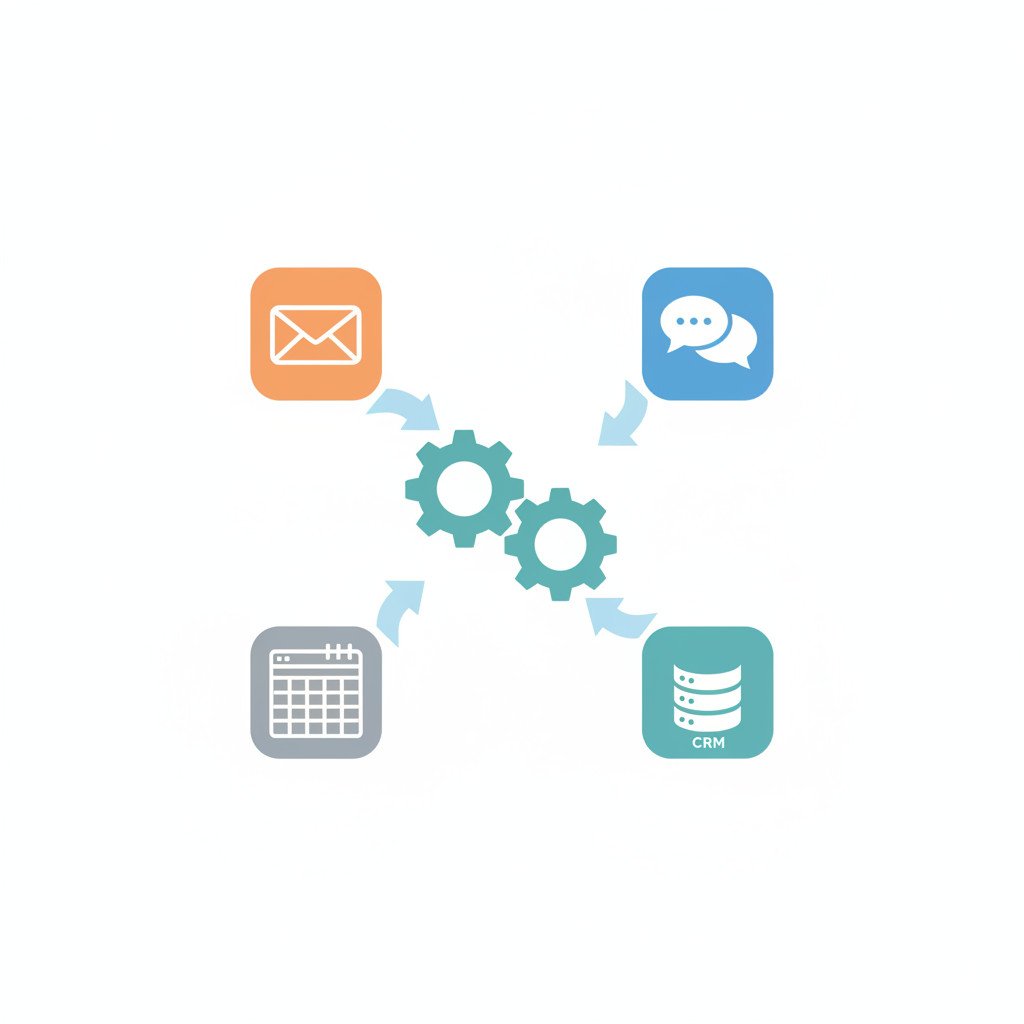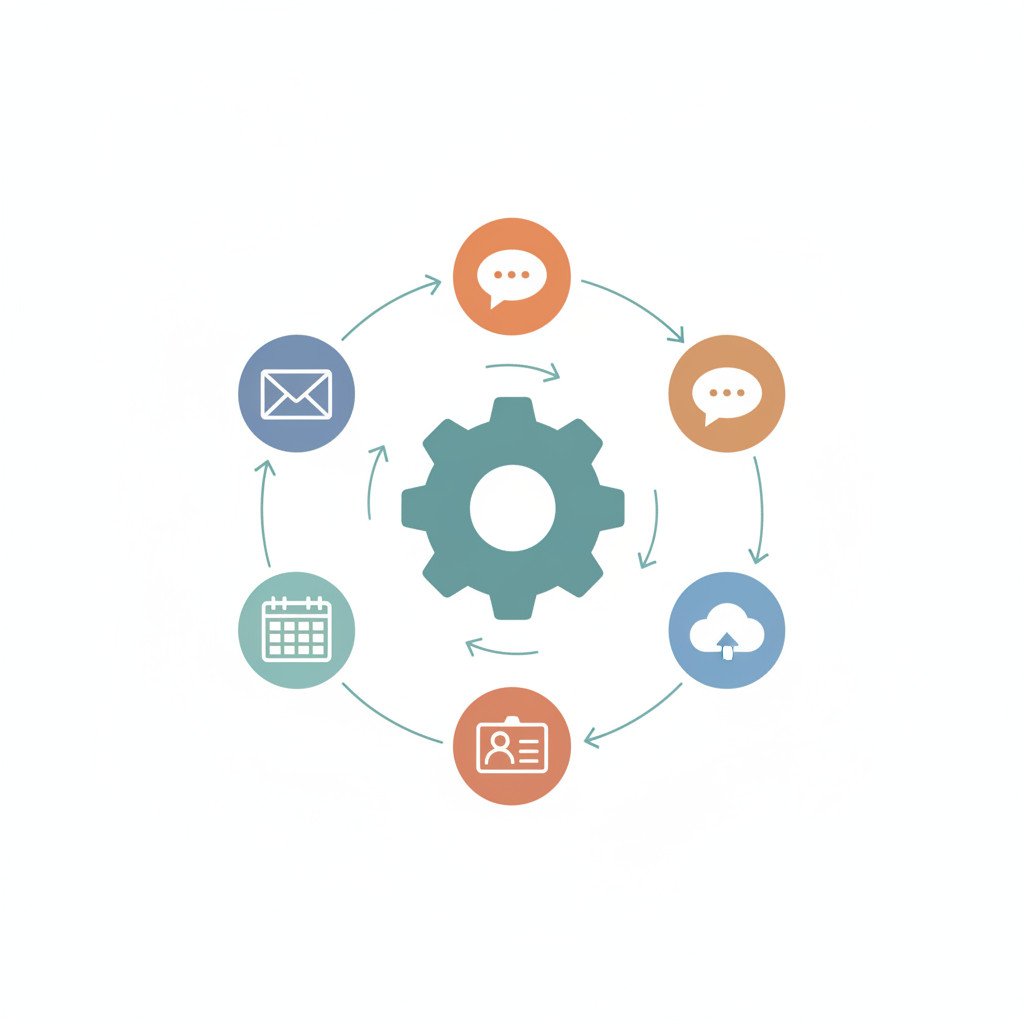Understanding Zapier pricing and ROI for automation matters more than ever for businesses that need speed and scale. As digital tools multiply, teams face repetitive work, slow handoffs, and rising labor costs. Automation removes these frictions and frees people to focus on strategy and customer work. Therefore, leaders want clear answers about costs, break even, and measurable returns.
Zapier stands out as a leading no code automation platform, because it connects thousands of apps with simple workflows. It supports more than 8,000 integrations and offers tools like Copilot to build AI driven automations. Also, Zapier’s plans scale from a generous free tier to enterprise offerings with security and single sign on. As a result, both small teams and large enterprises use it to cut manual steps and speed operations.
In this article we break down Zapier pricing and ROI for automation through practical examples and real case studies. First, you will learn how plan tiers, task limits, and premium features affect cost. Then, we quantify savings from time recovered and revenue recovered, and show payback timelines. Finally, we compare alternatives and highlight when Zapier’s hosted model delivers the best value. Read on to get clear takeaways you can act on.
Zapier pricing and ROI for automation: plans explained
Each Zapier plan balances task limits, features, and team controls. Therefore, choosing the right tier affects automation ROI and speed to value. Below is a clear, skimmable guide to what each plan includes, with vivid examples and buyer guidance.
Free
- What you get: 100 tasks per month and single step Zaps. You also access core app connections.
- Example: A freelancer auto posts blog links to social media. They save two hours per week.
- Best for: Solo builders testing automations and hobby projects.
Starter
- What you get: Higher task allowance than Free plus multi step Zaps and basic filters. Also, basic premium app access may be included.
- Example: A small e-commerce store auto saves new orders to Google Sheets and notifies Slack. They avoid manual entry each day.
- Best for: Small teams moving from manual work to repeatable automations.
Professional (Pro)
- What you get: Pro offers advanced multi step workflows, premium apps, and higher task bundles. For context, Zapier’s Pro option historically priced around nineteen dollars per month when billed annually.
- Example: A marketing lead routes leads to CRM, enriches contacts, and triggers personalized emails. As a result, conversion follow ups become faster.
- Best for: Growth teams and solo professionals who need automation scale without ops overhead.
Team
- What you get: Shared workspaces, team user seats, and centralized controls. You also get larger task allowances.
- Example: A support team routes tickets across Zendesk, Slack, and a CRM automatically. They reclaim hours per week.
- Best for: Cross functional teams that need governance and collaboration.
Company (Enterprise)
- What you get: Custom pricing, enhanced security, SSO, and enterprise SLAs. Also, Zapier offers SOC 2 and enterprise grade controls.
- Example: A global HR team automates onboarding across HRIS, Slack, and identity providers. They reduce manual hiring friction.
- Best for: Large organizations with compliance and scale needs.
For AI first teams and integrations guidance, read this comparison of Zapier and AI orchestration tools: Zapier vs AI Orchestration Tools. Also see guidance on connected data ecosystems for enterprise AI: Connected Data Ecosystems for Enterprise AI. For stack level choices, this deeper comparison helps: Zapier vs Gumloop Stack.
Deciding tip: map expected monthly tasks first, because task volume usually drives cost and ROI. Then, weigh team controls and security needs against the potential time saved and revenue recovered.
| Plan | Typical price (monthly) | Tasks and limits | Key features | Best for / ROI signal |
|---|---|---|---|---|
| Free | Free (100 tasks per month) | 100 tasks per month; single step Zaps | Core app connections; great for testing | Freelancers and hobby projects; fast time to value |
| Starter | Paid entry tier, pricing varies | Higher task allowance than Free; multi step enabled | Filters and basic multi step workflows | Small shops testing repeatable automations |
| Professional (Pro) | ~$19.99 when billed annually | 750 tasks per month included; extra tasks billed per task | Premium apps; advanced multi step workflows | Growth teams and solo professionals; clear ROI from saved labor |
| Team | ~$69 when billed annually | Larger task bundles; shared workspace | Team seats; centralized controls and collaboration | Cross functional teams; ROI from efficiency gains |
| Company (Enterprise) | Custom pricing | Custom volumes and SLAs | SSO; SOC 2 and SOC 3 compliance; enterprise security; dedicated support | Large organizations; ROI from scale and compliance savings |

Zapier pricing and ROI for automation: ROI benefits
Automation delivers measurable returns because it reduces manual effort and speeds processes. Zapier turns repetitive tasks into reliable workflows. As a result, teams reclaim time, reduce errors, and unlock revenue opportunities.
Time saved and capacity gained
- Automating routine work frees human hours for strategic tasks. For example, Remote used Zapier to automate support and internal workflows, gaining roughly 600 hours per month. Because teams reallocate that time, hiring needs shrink and productivity rises. In many cases, organizations see payback in months, not years.
Error reduction and process reliability
- Automation eliminates manual copy and paste. Therefore, teams reduce data entry mistakes and compliance gaps. Vendasta recovered lost revenue after automating lead routing and follow ups, because the system ensured every lead received timely action. Reliable automations also improve customer experience and lower churn.
Revenue enhancement and recovered value
- Zapier helps capture missed opportunities and speed lead response. Premiere Property Group saved $115,000 per year by automating listings and agent workflows. Similarly, Vendasta reports recovered revenue near $1,000,000 after adding automation and AI into sales processes. These examples show that automation can directly boost the top line, not just reduce costs.
Operational cost savings
- Automation often replaces repetitive contract work and reduces full time equivalent costs. For instance, Remote avoided roughly $500,000 in staffing costs through targeted automations. As a result, organizations can scale without proportional headcount growth.
How to measure ROI quickly
- Track time saved, error reduction rates, and revenue recovered. Then calculate payback by dividing monthly Zapier costs by monthly savings. Also factor in indirect benefits like faster customer response and higher employee satisfaction.
Deciding tip
- Start with high frequency tasks that cost several minutes each. Because volume multiplies small savings, automating these workflows usually yields the fastest ROI.
Zapier pricing and ROI for automation: integration capabilities that maximize ROI
Zapier connects to more than 8,000 apps, so it reduces integration work and speeds outcomes. Because Zapier bridges tools, teams avoid custom code and long IT projects. As a result, businesses realize ROI faster.
Key integrations that boost value
- Sales: HubSpot, Salesforce, Pipedrive and CRMs sync leads automatically. Therefore, reps respond faster and close rates improve.
- Marketing: Gmail, Mailchimp, Google Ads and Google Sheets automate campaign tracking. Also, automated lists and tagging reduce manual segmentation time.
- Customer support: Zendesk, Intercom, Freshdesk and Slack route tickets and alerts. Consequently, response time drops and customer satisfaction rises.
- Ops and collaboration: Notion, Microsoft Teams, Jira and Asana automate task updates and status handoffs. This reduces bottlenecks across teams.
How integrations multiply ROI
- First, they remove manual touchpoints that cause errors. Then, they scale consistency across channels. Next, they free staff to focus on high value work instead of repetitive steps.
Real world example
- Vendasta automated lead routing and follow ups by linking CRM, email, and sales tools. As a result, they recovered nearly one million dollars in previously lost revenue. This shows how integrated automations can directly recapture value.
Implementation tip: prioritize high frequency workflows that touch multiple systems. Because integration value compounds across apps, these automations typically yield the fastest and largest ROI.

Zapier pricing and ROI for automation: cost effectiveness and hidden costs
Zapier often delivers strong value, but cost effectiveness depends on volume and use. For small projects, the free and Starter tiers provide immediate wins. However, as usage scales, task volume becomes the primary driver of expense. Therefore, businesses should map monthly task counts before choosing a plan.
Hidden costs to watch for
- Task overages: Extra tasks can add up quickly. As a result, surprise bills occur when automations scale beyond forecasts.
- Premium app actions: Some integrations count as premium. Thus, your Zap may consume higher cost slots.
- Maintenance and testing: Automations need upkeep after app updates. Consequently, factor in occasional engineering or admin hours.
- Complex logic and branching: Extensive Filters, Paths, and Formatter steps increase design time. Although Zapier avoids charging for background steps in many cases, complexity still costs time.
- AI and Copilot usage: Advanced AI features may add fees or require higher plans. Therefore, include these if you plan AI driven automations.
How ROI shifts with growth
- Early stage: Small teams often see rapid payback within weeks. This happens because automations replace frequent manual tasks.
- Mid stage: As volume grows, predictability improves, but marginal cost per task matters more. Therefore, optimization yields the best incremental ROI.
- Enterprise scale: Large organizations benefit from volume discounts and governance features. However, they may face integration, compliance, and vendor management overhead.
Decision checklist
- Estimate monthly tasks realistically.
- Price premium apps into your forecast.
- Add 10 to 20 percent for maintenance time.
In short, Zapier remains cost effective for most teams. Yet measuring tasks and planning for hidden costs ensure accurate ROI forecasting.
Automation platform comparison: Zapier versus competitors
| Platform | Pricing snapshot | Key features | Integrations | User satisfaction | ROI potential |
|---|---|---|---|---|---|
| Zapier | Free tier; Pro ~ $19.99/month; Team ~$69; Enterprise custom | No-code Zaps; Copilot; multi-step workflows; hosted | 8,000+ apps including Slack, Google, Salesforce | Very high; easy for nontechnical teams | High for most teams; fast time to value |
| Make | Credit-based pricing; free tier; scalable credits | Visual scenario builder; complex data transforms | Wide library; strong API actions | High for technical users | High when workflows are complex and variable |
| n8n | Open-source self-hosted free; cloud from ~$24/month | Fully customizable; developer friendly | Many connectors; extensible via code | Medium to high; steeper learning | Very cost effective with dev resources |
| Workato | Premium enterprise pricing | Enterprise connectors; advanced governance | Deep enterprise apps and ERPs | High among large enterprises | Very high for complex integrations |
| Gumloop | Emerging AI orchestration; custom pricing | AI-first orchestration; prompt and agent tooling | Growing integrations focused on AI | Early positive reviews | Strong for AI-first use cases |
Therefore choose the platform that matches volume and technical skill.
Decision tip: map task volume, complexity, and maintenance costs to predict ROI. Also, start with high frequency workflows because they scale savings quickly.
Conclusion
Zapier pricing and ROI for automation show how practical automation can be. Small teams can start on a free or low cost plan and see quick wins. Larger organizations scale with Team or Enterprise plans to gain governance and security. In every case, ROI comes from reclaimed time, fewer errors, and faster revenue capture.
Therefore, start by mapping your task volume and the highest frequency manual processes. Then, choose the plan that matches expected tasks and the integrations you need. Also, factor in maintenance and premium app actions so your forecast stays realistic. As a result, you avoid surprise costs and measure payback in months.
EMP0 complements tools like Zapier by delivering ready made AI and automation systems. EMP0 is a US based company that focuses on sales and marketing automation and AI powered growth systems. These solutions deploy securely under client infrastructure when required and integrate with existing stacks. EMP0 also offers consulting and pre built automations to speed time to value.
Explore EMP0’s resources and services to accelerate your automation roadmap. Visit emp0.com, check the blog at articles.emp0.com, or follow @Emp0_com on Twitter. Also see medium.com/@jharilela and n8n.io/creators/jay-emp0 for additional insights and tools. Take action now to turn automation costs into sustained ROI.

